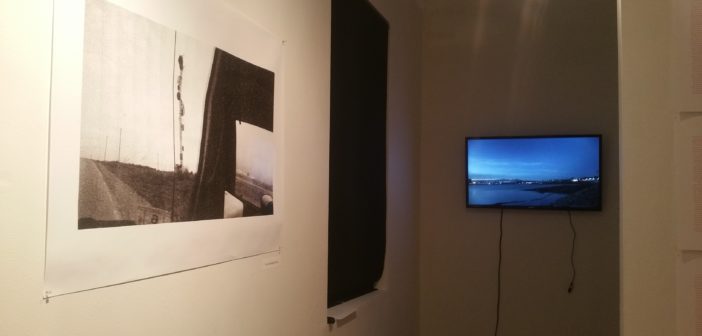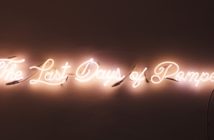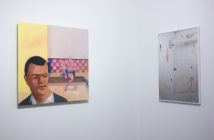Silent. Silence. Silenced contemplates sound and its absence via the work of Boston-based artists Charlene Liska and Christine Palamidessi, with contributions from the French sound artist Christine Coënon and the mobile artist John Wilkinson. The exhibition’s location, in the Atlantic Works building of East Boston, is a study in the dramatic and rapid gentrification of East Boston. Construction in the lot immediately next to the building reverberates throughout the space, layering onto the exhibition an unintended but captivating site-specific addition. Aspects of the exhibition also felt under construction, although these instances interfered with--rather than enhanced--viewer experience. Much of the show’s tech was not turned on, or not working. Each artist used different ways of identifying their work, resulting in difficult-to-navigate objects labels.
Despite its logistical difficulties, Silent. Silence. Silenced deals with timely themes and the exhibition deserves attention. In our present cultural moment, in which some groups of people are just beginning to be heard (or others are continuing to be actively silenced), the exhibition offers an essential consideration of speech, presence, and power.
Palamidessi’s Female Abduction deals with the silence of women subjected to harassment, abuse, and misogyny. Deriving its subject from the Greek myth of Philomela, told in Ovid’s Metamorphoses, Female Abduction shows an open box populated by shells, a sea sponge, sea glass, crystals, and bundles of colorful cloth attached to the box with pearl-tipped pins. The flesh-like shapes assumed by the cloth bundles are significant. Philomela was raped and her tongue mutilated to prevent her from naming her assailant. By making objects imbued with organ-like, vaginal imagery, Palamidessi creates a venue for Philomela’s story to be told and, through an imagined archive, recovers Philomela’s ability to speak.
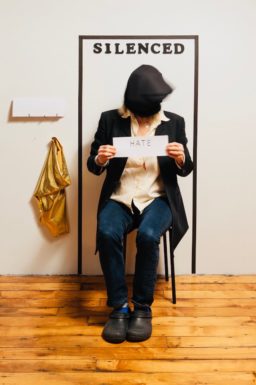
Silenced Photo Booth. Courtesy of Atlantic Works Gallery.
Speech likewise informs Liska’s Prophecy I Machine Transcription and Prophecy II (audible). The two video works show a series of people, all wearing hooded sweatshirts, speaking to the camera, confessional-style. Prophecy I includes a transcription on the wall next to the monitor, and a text banner in the video runs below the speaker. Prophecy II only incorporates the audio of the speakers. Whether heard or read, the dialogue contained within the videos re-tells the things we usually keep in a state of silence--secrets, personal tragedies, the banal stories of everyday living. The diversity (meaning race, gender, and class) of the speakers is not insignificant; however, dialogue on the subject is complicated by the uniformity imposed on the speakers through the device of the sweatshirt. What does it mean to talk about diversity when everyone is wearing the same outfit?
Speech and uniformity are intertwined in a series of works by Palamidessi that also take up the theme of the hood. The monoprint series Black Hood references the historical associations of the hood with racism, from the hoods worn by hate groups to hoods used in lynchings. The black hood re-appears in Silence by Torture, an installation which recalls the horrifying photos of prisoners being tortured at Abu Ghraib. Across the room, Silence by Capitalism invents a hooded condition for Marx’s so-called ‘golden age of capitalism’ with three gold-hooded mannequin heads. The gold hoods represent something of a conceptual leap; how do we compare the imagined hoods worn by those living in late capitalism with those very real hoods worn by victims of racially-motivated violence? The shaky political strategy of Silence by Capitalism is repeated in a nearby interactive #artselfie station where visitors are encouraged to have their photo taken while sitting below a sign that reads “Silenced,” donning either a black or gold hood, and holding a sign with words like “Chocolate” or “Branding.”
Some of the works in the exhibition are outwardly silent, but generative of sound. Palamidessi’s installation No Noise Cannonballs and Gun Shells presents a series of molds of cannonballs cast from weapons used during the Ottoman siege of Otranto between 1480 and 1481. The artist has inscribed the molds with words, which provoke sound when read either aloud or to oneself. John Wilkinson’s mobile Blue Bolt of Lightning without Thunder evokes sound through its very absence. At least in the natural world, it is impossible for lightning to occur without thunder.
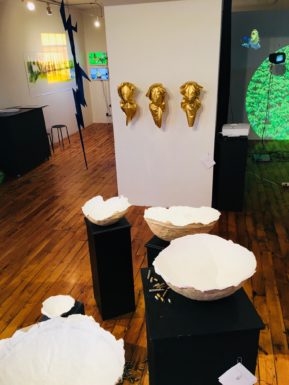
Installation view of Silent. Silence. Silenced. Courtesy of Atlantic Works Gallery.
Other works in the exhibition are obviously noisy. Liska’s Urban Birds video features imagery of trees set to a soundtrack of birds within an urban environment. Avian emittances are layered onto ambulance sirens and car horns; however, the proximity of the video to Liska’s Prophecy II (audible) means that the confessionals in Prophecy dilute the carefully crafted soundscape of Urban Birds. Birds resurface in Liska’s installation Diorama, which features a series of videos projected into a semi-contained space. On and behind a small, technologically-obsolete video monitor, projected visual imagery encompasses a small bird and landscape elements, while audio recordings relay the sounds of birds. The installation also envelops aspects of the gallery’s architecture, including a window. Though a curtain obscures this window, ambient sound from the world beyond the window penetrates Diorama.
The gallery space containing Silent. Silence. Silenced is not, in fact, silent. The construction of nearby condos, the wind, and the ocean interrupts and ultimately heightens the exhibition’s meditations. The East Boston waterfront communicates alongside artwork, a not-so-silent partner in an exhibition about silence that also speaks.
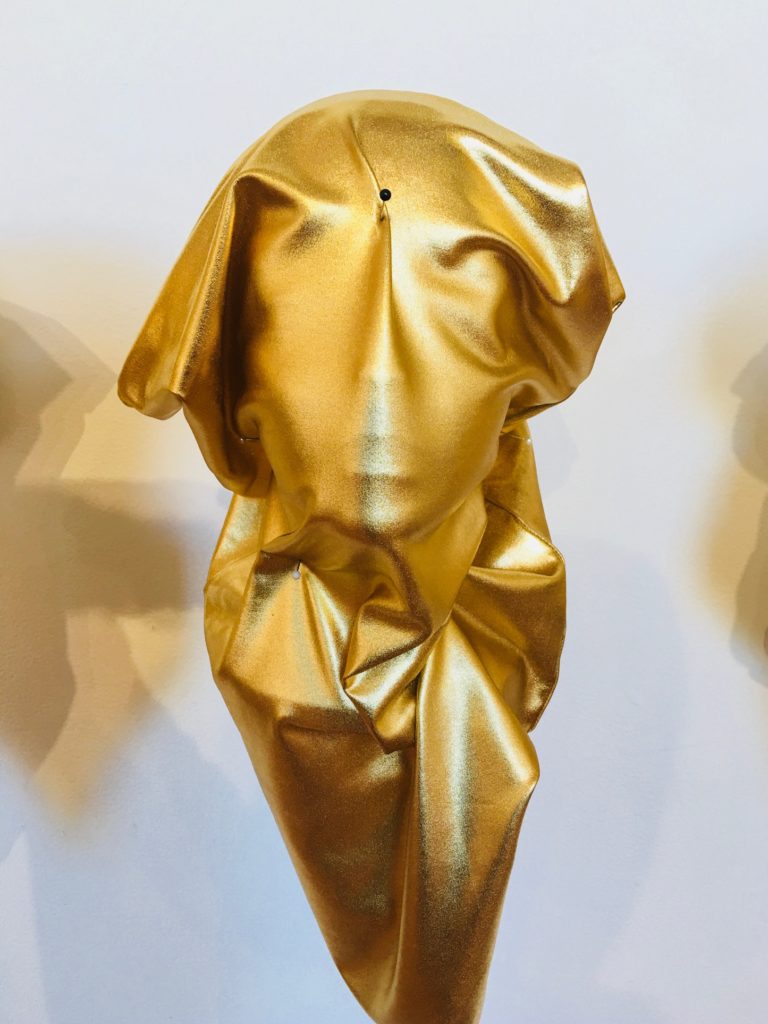
Silenced by Capitalism. Courtesy of Atlantic Works Gallery.
Silent. Silence. Silenced was on view at Atlantic Works Gallery through Saturday, November 25.

